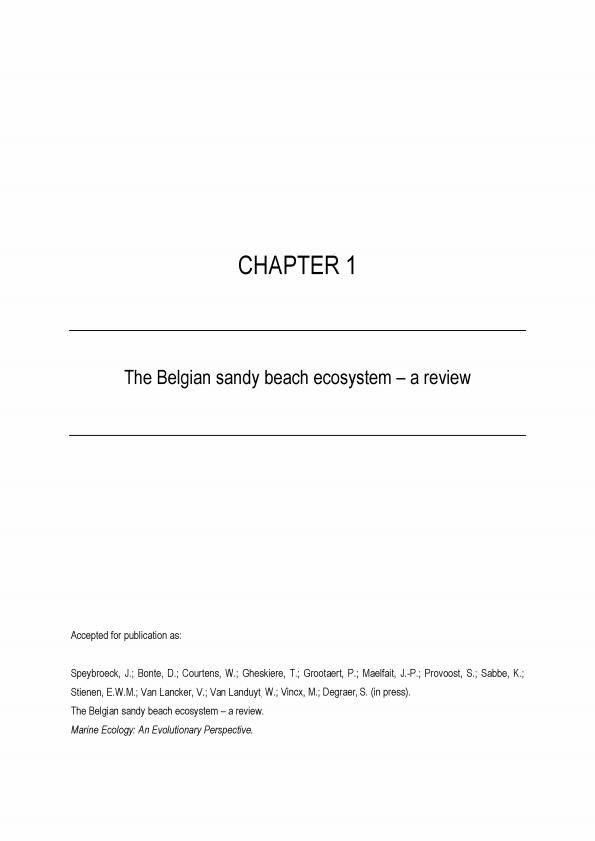The Belgian sandy beach ecosystem. a review
Details
| Number of pages | 23 |
|---|---|
| Pages (to-from) | 21-44 |
| Type | Contribution to book not published by INBO |
| Category | Research |
| Language | English |
Bibtex
@misc{8b197471-ffcc-4057-8d14-cc519b9b1a8e,
title = "The Belgian sandy beach ecosystem",
abstract = "This paper provides a comprehensive overview of the available knowledge on sedimentology and hydrodynamics and five major ecosystem components - microphytobenthos, vascular plants, terrestrial arthropods, zoobenthos (macrobenthos, meiobenthos, hyperbenthos and epibenthos) and avifauna - of Belgian sandy beaches (from foredunes to foreshore). An ecosystem overview is presented for this specific geographically delimited shoreline, instead of dealing with a single component only. Belgian beaches are (ultra-)dissipative, macrotidal and wide beaches with a cross-shore average median grain size of 160-380 µm. Sediment becomes coarser, slopes steeper, tidal range smaller towards the east. Especially eastern beaches have been reshaped frequently through human action (e.g. beach nourishment). Belgian beaches are characterised by the presence of highly adapted organisms. It is demonstrated that even a highly recreational and heavily populated coastline like the Belgian coast provides valuable yet threatened habitats to several beach-dependent species, which may reach high numbers. Vascular plants of the drift line, dry beach and embryonic dunes are mostly short-lived and thalassochorous. Most common species are sea rocket (Cakile maritima), prickly saltwort (Salsola kali subsp. kali) and sea sandwort (Honckenya peploides). Terrestrial arthropods inhabiting the same general area are highly diverse, comprising halobiontic, halophilous and haloxene species. Prominent members of this fauna are sandhopper (Talitrus saltator) and dipterans (flies). Microphytobenthos is an important primary producer on Belgian beaches, mainly consisting of diatoms. Very little is known about this group of organisms. Belgian beaches also have a specific zoobenthic fauna in both meiofauna and macrofauna, e.g. the typical upper intertidal Scolelepis squamata-Eurydice pulchra community. Also epi- and hyperbenthic animals depend on the beach, e.g. as nursery grounds. Nowadays no nesting of birds occurs on the beach itself. Nevertheless, Belgian beaches are important for resting and foraging (e.g. sanderling Calidris alba). Little is know about biological interactions on Belgian beaches. Human actions associated with several aspects of recreation, beach management and fisheries, are endangering all the discussed biota, and are specified.",
author = "Jeroen Speybroeck and D Bonte and Wouter Courtens and T Gheskiere and P Grootaert and Jean-Pierre Maelfait and Sam Provoost and K Sabbe and Eric Stienen and V. R. M Van Lancker and Wouter Van Landuyt and M Vincx and S Degraer",
year = "2007",
month = jan,
day = "01",
doi = "",
language = "English",
publisher = "Instituut voor Natuur- en Bosonderzoek",
address = "Belgium,
type = "Other"
}
Authors
Jeroen SpeybroeckD Bonte
Wouter Courtens
T Gheskiere
P Grootaert
Jean-Pierre Maelfait
Sam Provoost
K Sabbe
Eric Stienen
V. R. M Van Lancker
Wouter Van Landuyt
M Vincx
S Degraer

